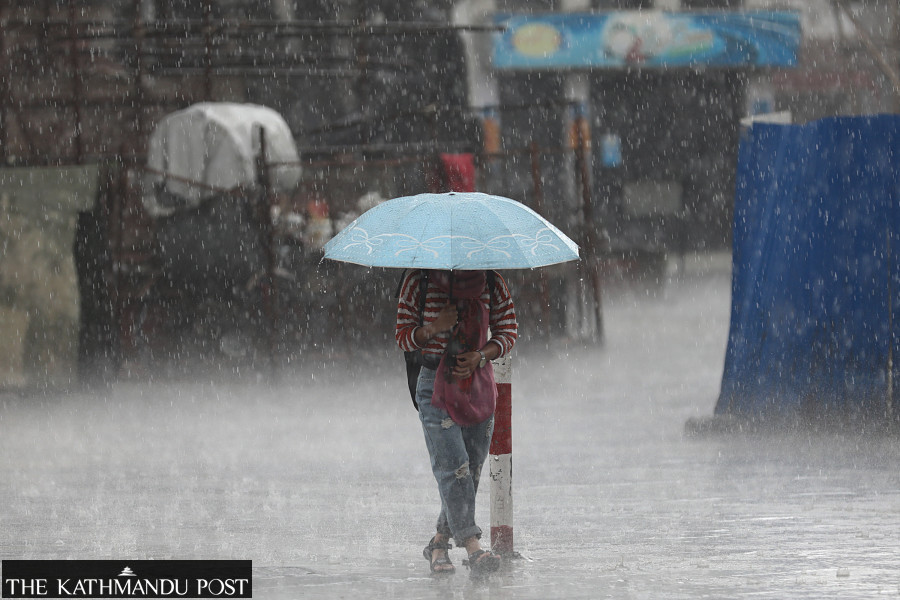Climate & Environment
Rainfall data remains scarce due to fewer gauging stations
Officials say existing weather monitoring stations cannot gauge spatial and temporal rainfall variability.
Arjun Poudel
On Sunday evening, the water level in the Bishnumati River and its tributaries exceeded the danger mark, probably for the first time in the last several years. A 13-year-old boy, who was swept away in the Samakhusi area, is still reported to be missing.
The flood water from the river breached embankments and inundated several roads, roadside shops and settlements.
Locals in the Balaju area said the rainfall, which occurred in a short span of time, was way too intense and scary.
However, the rainfall data of the Meteorological Forecasting Division under the Department of Hydrology and Meteorology shows that Kathmandu witnessed only 2.7 millimetre rainfall in 24 hours on Sunday.
When asked about flash floods and inundation in the Bishnumati River and Balaju areas, officials said the rainfall gauging station at Budhanilkantha recorded only 38.8 mm rainfall.
“We do not have a weather station in the Balaju area,” said Rojan Lamichhane, a meteorologist at the division. “We too have seen the video footage of flooding in the Bishnumati river but we don’t exactly know how much rainfall occurred in the Balaju area.”
On July 23, 2002, Kathmandu Valley had recorded 177 mm rainfall in 24 hours.
The Met Office records the rainfall data from its weather stations which are very few in the country. Met experts say that existing weather stations cannot gauge spatial and temporal rainfall variability.
“Sunday’s flash flood in Bishnumati river is not the first and isolated case where they [Met office] don’t have data,” said Dr Binod Pokhrel, a climate expert who is also an associate professor at the Central Department of Hydrology and Meteorology at Tribhuvan University.“Disaster triggered by heavy precipitation struck Melamchi in June 2021, but we still do not have rainfall data.”
Experts say the time has come to increase weather station networks, update technologies and maintain the data of weather reports. Authentic data not only helps to know the weather patterns, it also helps the authorities concerned to take precautionary measures and helps policymakers while formulating policies on development works.
“River embankments have not been built properly and they can’t resist the pressure of the swollen river,” Pokharel said. “Drainage and sewage are not proportional to water discharge volume at the time of heavy rainfall.”
Officials concede that the existing weather monitoring stations, which are few and far between, cannot gauge spatial and temporal rainfall variability.
“We have to increase the number of weather monitoring stations for accurate and real-time weather data,” said Dr Indira Kandel, a senior divisional meteorologist at the Climate Analysis Section under the Department of Hydrology and Meteorology. “Along with improving our weather monitoring system, the other concerned authorities must also keep in mind the changing weather patterns while doing infrastructure developments—constructing embankments, roads, drainage and sewage systems.”
Nepal is one of the countries most vulnerable to the climate crisis and has witnessed extreme weather events over the past decade and a half. Extreme weather events—excessive rainfall in a short span of time, continuous rains for several days in the post-monsoon period, dry spells and drought, below-average precipitation and above-normal temperatures in winter—have become more frequent in Nepal in recent years.




 17.12°C Kathmandu
17.12°C Kathmandu











